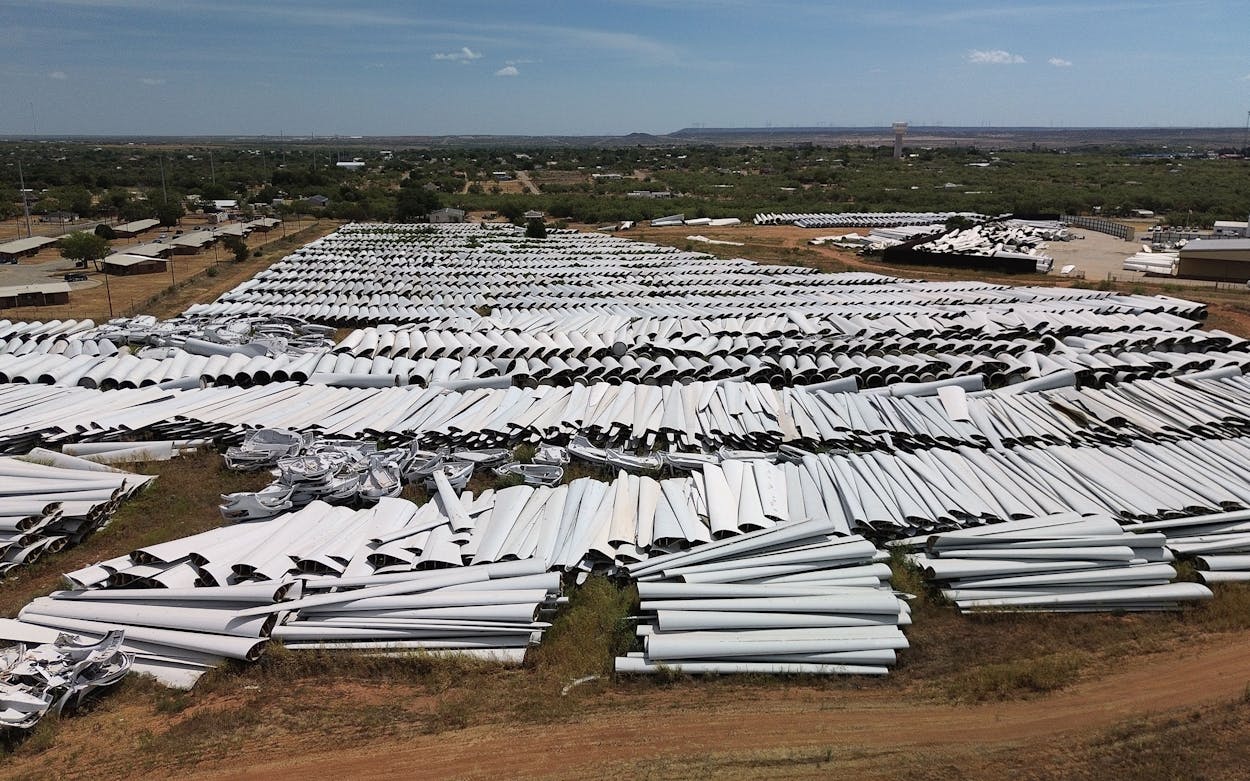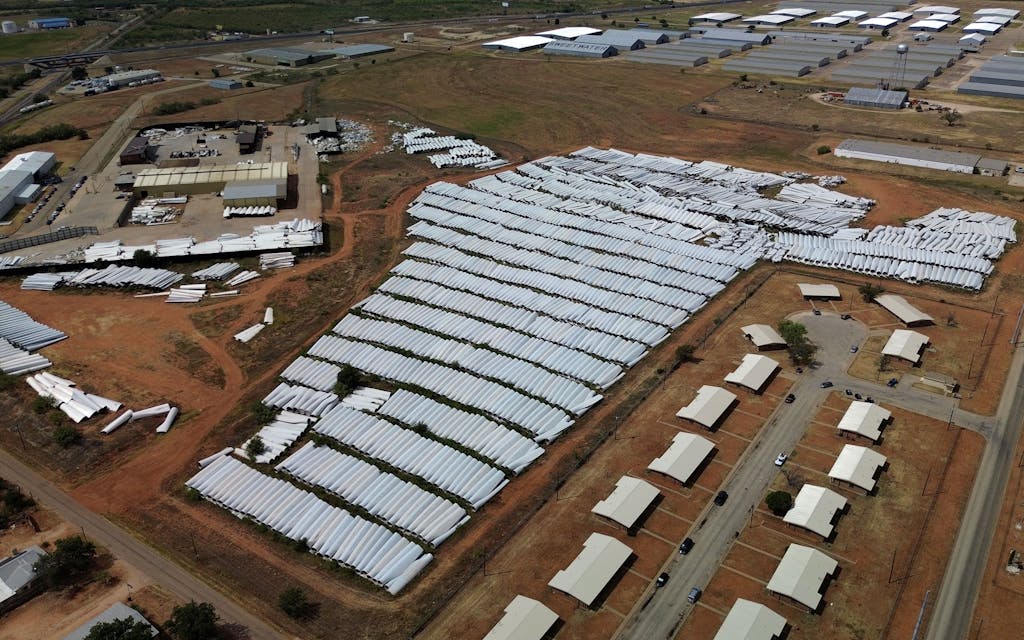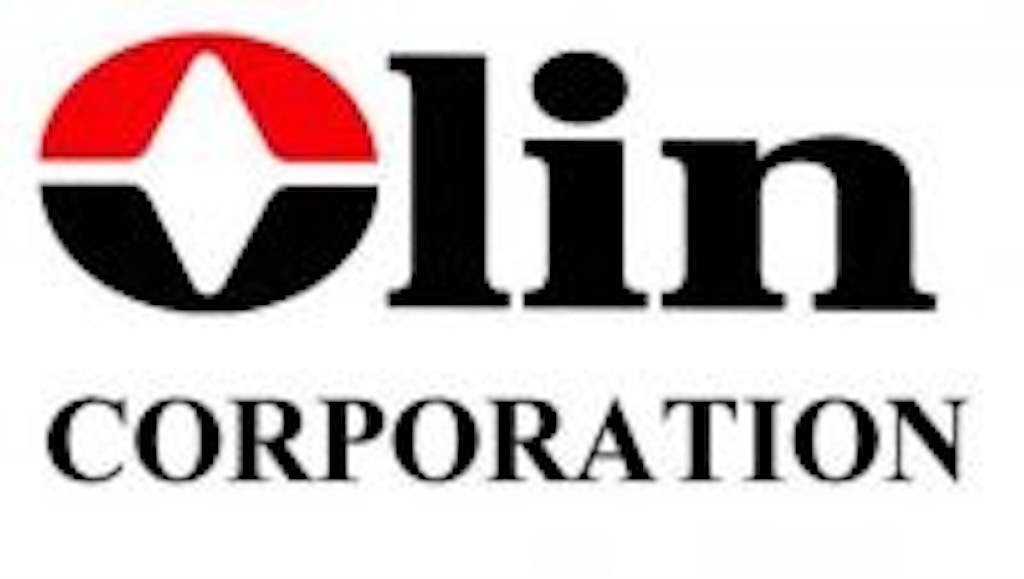Epoxy
July 10, 2024
Olin Force Majeure
Olin Corporation Provides Update on Hurricane Beryl
Jul. 10, 2024 4:10 PM ETOlin Corporation (OLN)
CLAYTON, Mo., July 10, 2024 /PRNewswire/ — Olin Corporation (NYSE: OLN) announced a temporary disruption of operations at its Freeport, Texas, facility as a result of Hurricane Beryl.

Olin has declared a system-wide Force Majeure for its Chlor Alkali Products & Vinyls division products and Aromatics shipments. This disruption is a result of hurricane-related damage to Olin facilities in Freeport, Texas, impacting Olin’s normal production and logistics capabilities including access to power, raw materials, and other essential feedstocks and services.
Olin facilities in Freeport are undergoing a comprehensive inspection and assessment, and a coordinated plan is being developed to ensure the safe and orderly return of these plants to service. The duration of this disruption is uncertain.
Olin’s number one priority remains the safety of our employees, their families, and the communities in which we operate.
June 9, 2024
SOMAR to Manufacture Epoxy Resin in WV
West Virginia Announces Facility for Epoxy Resin Product
For the automotive sector.
Industrial Media Staff
Jun 6, 2024

Office of the Governor Jim Justice
West Virginia Gov. Jim Justice and officials of Japan-based SOMAR announced that the company would establish a facility to manufacture an epoxy resin product used in the automotive sector.
The new facility will be located in Wood County within the Polymer Alliance Zone Industrial Park, utilizing an existing building for operations. SOMAR plans to invest a minimum of $2.5 million, creating employment opportunities for 25 individuals.
SOMAR, a family-owned company headquartered in Tokyo, supplies companies such as Toyota and Ford.
May 13, 2024
Wind Turbine Issues
Thousands of Old Wind Turbine Blades Pile Up in West Texas
Officials in Sweetwater say an out-of-state company has made their town a dump for the seldom-seen trash created by renewable energy.

Discarded wind turbine blades fill thirty acres on the west side of Sweetwater.
Update, May 6, 2024: Despite earlier assurances from Global Fiberglass Solutions that they would be removed with months, the blades remain in Sweetwater.
Update, September 25: General Electric filed a lawsuit last week claiming that Global Fiberglass Solutions has failed to fulfill its promise to recycle thousands of blades. GE says it paid the company $16.9 million to recycle about five thousand wind turbine blades, but that GFS instead stockpiled them at facilities in Sweetwater and Iowa. “Only after GFS took millions of dollars from GE, did GFS all but shut down its operations without recycling the Blades,” reads the complaint, filed in U.S. district court in New York.
GE says it later contracted with another company to recycle its blades and is seeking damages to cover these costs as well as reputational damage. Global Fiberglass has not responded to the lawsuit. GE removing its blades from Sweetwater wouldn’t clean up the giant dump; blades manufactured by other companies would still remain.
Every year since 1958, the West Texas town of Sweetwater has hosted the World’s Largest Rattlesnake Roundup, which is exactly what it sounds like. Thousands of the venomous ophidians are rooted out of their dens and brought to the Nolan County Coliseum to be gawked at, “milked,” and often beheaded and skinned. It started as a way for the region to rid itself of some of its least-welcome residents. Now community leaders wish they could do the same with several giant piles of scrap that have for too long been left to bake in the sun. But that’s proving to be much trickier than wrangling reptiles.
About forty miles west of Abilene on Interstate 20, Sweetwater has unwittingly become home to what is possibly the world’s largest collection of unwanted wind turbine blades. When forklifts deposited the first of these in a field behind the apartment complex where Pamala Meyer lives, on the west side of town, in 2017, she wasn’t initially bothered. But then the blades—between 150 and 200 feet in length and mostly made of composite materials such as fiberglass with a binding resin—kept coming. Each was cut into thirds, with each segment longer than a school bus. Thousands arrived over several years, eventually blanketing more than thirty acres, in stacks rising as high as basketball backboards. Every few dozen feet, a break among the stacks leads into an industrial hedge maze.
“It’s just a hazard all the way around,” Meyer said. She worries about neighborhood children exploring the unfenced piles and says that stagnant pools of water inside the blades breed swarms of mosquitos. Matt Jackson, who works in a nearby warehouse, has other concerns. The piles create shaded nooks and crannies, perfect for Sweetwater’s unofficial mascot. “It’s just a big rattlesnake farm,” he said.

The blades were brought here by Global Fiberglass Solutions, a company based in Washington State that announced in 2017 its intention to recycle blades from wind farms across the region. Instead of ending up in landfills, they would be ground up into a reusable material that could be turned into pallets, railroad ties, or flooring panels. Global Fiberglass is one of a few companies attempting to develop a viable business from recycling blades.
Besides the main boneyard—behind Meyer’s apartment—stacks of blades also occupy ten acres a couple miles south of town, and the company is storing blades in other locations in the county. “They have, in my view, abandoned them there,” said Samantha Morrow, the Nolan County attorney. “The county doesn’t have and cannot find millions of dollars to clean this up.”
The Sweetwater piles are also at least partly the indirect result of a rule clarification the Internal Revenue Service issued in 2016. Before then, a wind farm could collect valuable federal tax credits for only its first ten years of operation. But the IRS determined that it would restart the clock on the credits if a wind farm “repowered” its turbines—replacing most of their equipment with newer parts. So, despite the expected two-decade lifespan for turbine blades, wind farms across Texas and other states began replacing many that remained in good shape years early.
Some paid Global Fiberglass to remove the older blades and haul them away. The company set up shop in an empty industrial facility in Sweetwater that was once an aluminum recycling plant, but Don Lilly, the managing director of Global Fiberglass, told me that only a handful of blades have ever been ground up there. He said the company was close to ramping up and would soon mill the blades into pieces the size of coarse sand. “The blade material is sold,” he said, “but I can’t go into that part yet.”
Sweetwater has heard such pledges before. The county declared the stockpile a public nuisance a year ago. City attorney Jeff Allen said Sweetwater’s local ordinances are aimed at overgrown lots, not turbine blades, leaving the city with limited legal options. He said he believes Global Fiberglass “intended to be a viable business” but at some point “it just came off the rails.” (Lilly disputes this and says the delays have come from ensuring “all systems were engineered.”)
Sweetwater benefits from the wind-energy industry, including two large wind farms nearby. Drivers arriving on I-20 from either direction are welcomed by a giant wind turbine blade painted with the town’s name. But even the community’s biggest boosters of renewable energy long ago ran out of patience with Global Fiberglass’s mess. “We’d like to see them gone,” said Karen Hunt, director of the local chamber of commerce. “The sooner the better.”
Sweetwater isn’t the only place Global Fiberglass has stockpiled blades. It has a total of 1,300 in Newton, Iowa, and two other cities in that state, according to the state’s Department of Natural Resources. After an investigation, the agency concluded in 2021 there was no recycling going on, nor was any likely to happen. It declared the company to be running an unpermitted dump.
Frank Liebl, executive director of the Newton Development Corporation, testified at a state hearing that the initial excitement in 2017 of recruiting a blade-recycling company soon soured. In the intervening years, he asked Global Fiberglass many times when it would begin its recycling. He always got “the same answer: ‘Soon,’ ” he said.
By July 2021, the company owed more than $1 million in unpaid rent in Newton, according to testimony at the Iowa hearing from its landlord’s attorney. In Texas, it failed to pay taxes to Nolan County in 2020 and is now three years in arrears, according to tax records. Last year, the Texas Commission on Environmental Quality fined the company $10,255 for what it described as illegally stored solid waste. It allowed the company to pay the penalty in monthly installments for three years. In June, Global Fiberglass defaulted, according to the commission.
In Newton, pressure from the state of Iowa seems to have worked. Craig Armstrong, a city employee, said that General Electric recently acquired the blades. It’s unclear whether GE purchased them from Global Fiberglass or from the landlord who was owed the $1 million in rent, who may have taken possession of the blades. The city was promised that they would be sent to a recycling center by the end of the year, although none had been removed by mid-August, according to a Newton city official.
Lilly declined to talk about the Iowa blades. He said the situation in Sweetwater is different and insists that Global Fiberglass will grind down and recycle these blades. “If you come back nine months from now, you will not see the material,” he said. We’re marking our calendars and will check back in May.
https://www.texasmonthly.com/news-politics/sweetwater-wind-turbine-blades-dump/
May 4, 2024
Epoxy Highlights from Huntsman Investors Call
Huntsman Corporation (HUN) Q1 2024 Earnings Call Transcript
May 03, 2024 2:50 PM ETHuntsman Corporation (HUN) Stock
Q1: 2024-05-02 Earnings Summary
EPS of -$0.06 beats by $0.00 | Revenue of $1.47B (-8.47% Y/Y) misses by $1.15M
Huntsman Corporation (NYSE:HUN) Q1 2024 Earnings Conference Call May 3, 2024 9:00 AM ET
Company Participants
Ivan Marcuse – VP, IR & Corporate Development
Peter Huntsman – Chairman, CEO & President
Phil Lister – EVP & CFO
John Roberts
Then I had thought you had already exited epoxy BLR resin that’s there. So, what else are you exiting that I thought you exited before and how much is left to go?
Peter Huntsman
Well, again, when we look at our epoxy businesses, we do continue to produce some commodity grades of epoxies and we will do that as we base load some of our facilities. Our emphasis is going to continue to be able to take that volume and moving it into higher value added components and so forth. But, yes, you do have some of the low end of your reactions — reactors that take place and your production that takes place that I consider to be commodity and that — you’re always going to be exiting the bottom end of that and pushing more volume on the upper end of that margin scale. So, not sure that it’s all necessarily, when we talked about exiting businesses, isn’t necessarily all BLR. I would just say that as we look at our capacity, availability and where we want to put our emphasis, that may be beyond just basic BLR as well.
Phil Lister
Yeah. And John, for context, I mean, BLR used to be about 50%, if you go back ten years. Today, we still have some business as Peter says, it’s about 10% of our volumes and we continue to move that down when appropriate.
April 30, 2024
Epoxy Highlights from Olin Investors Call
Olin Corporation (OLN) Q1 2024 Earnings Call Transcript
Apr. 26, 2024 1:25 PM ETOlin Corporation (OLN) Stock

Q1: 2024-04-25 Earnings Summary
EPS of $0.45 beats by $0.09 | Revenue of $1.64B (-11.33% Y/Y) misses by $12.71M
Olin Corporation (NYSE:OLN) Q1 2024 Earnings Conference Call April 26, 2024 9:00 AM ET
Company Participants
Steve Keenan – Director, Investor Relations
Ken Lane – Chief Executive Officer
Todd Slater – Chief Financial Officer
Damian Gumpel – Vice President, Corporate Strategy
Ken Lane
Thank you, Steve and good morning everyone. Let me start by saying I am delighted to be part of Team Olin. Olin has a long and rich history with leading positions across this portfolio and I am looking forward to leading the company as we define the next phase of value creation for our shareholders and employees.
Today, Olin is in great shape with an investment-grade balance sheet and a strong team. This company has incredible potential and I look forward together with our 7,000 Olin team members to start building upon this foundation and writing the next chapter in Olin’s success story. I do want to thank Scott Sutton for his leadership of the company, which resulted in a step change of record results. Scott has been very gracious with his time and support during our transition. I am a firm believer in our operating model and I am absolutely committed to continuing Olin’s value-focused commercial approach. The entire Olin team embraces the winning model and that support runs deep from senior leadership to frontline manufacturing.
Now, I want to talk about my near-term priorities. First and foremost is always operating safely. Keeping our people and our communities safe, while running our assets efficiently and reliably. It is not a coincidence that the safest operators are the most reliable. We are focused on being a leader with respect to our safety performance.
Next, Olin is a coiled spring. And as our market demand recovers and customers seek to pull more volume, we will be ready to capture that significant value opportunity. I’ll provide whatever support is needed to defend the gains we have achieved and continue our value generation as the industry leader that we are. Also, it’s clear to me that investors appreciate Olin’s consistently strong cash flow and share buybacks across the cycle. Delivering on our commitments is an imperative. We will continue our disciplined capital allocation strategy and will be a steady buyer of our shares, focused on delivering above average shareholder returns. Finally, I am committed to providing Olin stakeholders with strategic transparency and a long-term roadmap for growth, that we will share during a Capital Markets Day around year end. More will be communicated on that in the near future.
Now, let’s take a quick look at our chlor alkali business and turn to Slide 5. Olin took decisive actions during the fourth quarter to curb price erosion across our system. Early in the first quarter, our value accelerator initiatives continue to tighten Olin supply, successfully advancing the inflection point and effectively stopping the value drop. During the first quarter, we saw improved chlorine volume being pulled by Olin customers at our value level across several key end uses, including agriculture, urethanes, titanium dioxide and water treatment. As we look beyond the first quarter, we are seeing some seasonal demand increases for chlorine and caustic soda. In the United States, planned and unplanned outages and low supplier inventories have kept caustic availability tighter than expected. Trade publications confirm that domestic caustic is climbing up from a cycle bottom.
Now, let’s turn to our Epoxy business on Slide 6. During the first quarter, our Epoxy business continued to realize the benefits of our 2023 restructuring actions. Our streamlined asset base will support the growth of our higher margin epoxy systems demand while also reducing Olin’s downside commodity exposure across the cycle. Our recently announced U.S. anti-dumping initiative seeks to level the playing field. The first quarter marks the beginning of the recovery for epoxy and the start of a gradual climb out of a very deep trough. As that building momentum continues into the second quarter, we will realize continued benefits from our restructuring and stronger focus on higher margin formulated systems.
Hassan Ahmed
Understood. Understood. And as a follow-up, you touched on the improvement sequentially within the Epoxy business. How should we think about the split between, call it, further organic improvement ove0r there? And maybe you could touch a bit on some of these sort of trade cases that you guys as well as the industry has brought about on the anti-dumping side of things?
Ken Lane
Yes. So we are seeing the impact from the restructuring last year. The team did a great job last year rightsizing the footprint. We have got the asset footprint that we think is going to support the strategy around growing the higher margin business today. But we are seeing an influx over the last year or so of products that is being dumped into the United States. First, I’ll say, we’re all for fair trade, free trade, but we are going to fight against unfair trade, and that’s what you see here. So we had the first hearings in Washington, D.C. this week. It’s early in that process, but we are going to continue to push that case. And we believe that there is a risk within the United States having only two producers of epoxy resin is a risk for the future. We have got a very critical material here that we are producing and it is under threat by unfair trade.
